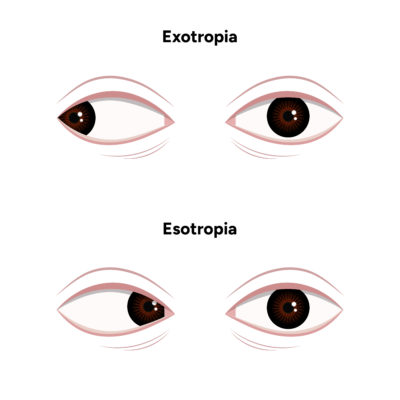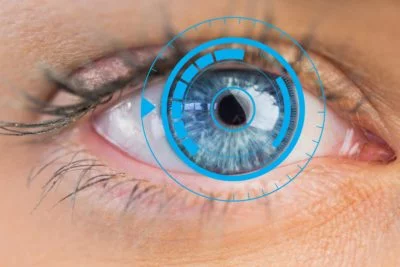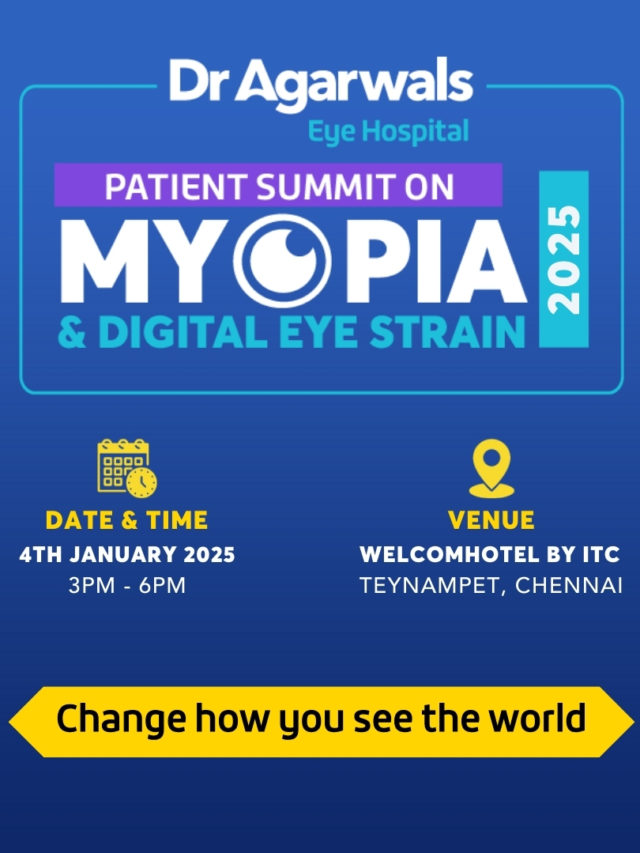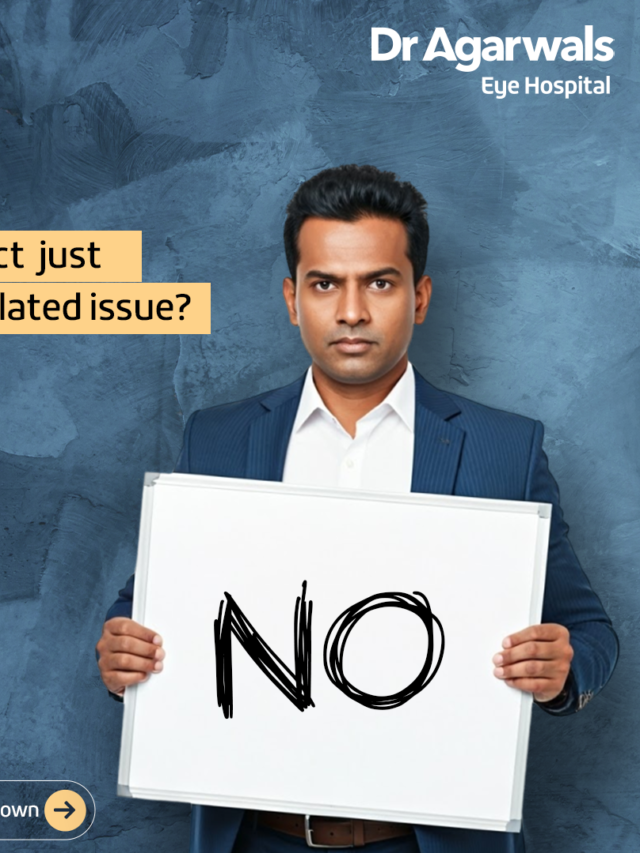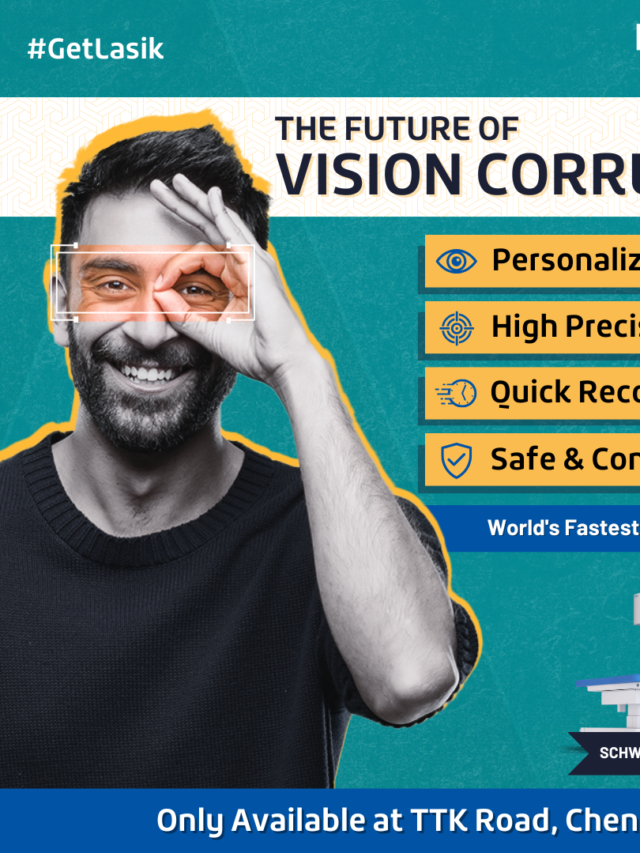Exotropia, a common form of strabismus or squint, is a condition where one or both eyes drift outward, particularly when focusing on distant objects or during fatigue. It can affect children and adults alike, and without timely intervention, it may impact visual development, binocular vision, and overall eye function.
Thankfully, several exotropia treatments are available today, from glasses to surgical corrections, each tailored to the patient’s age, severity, and functional vision. In this blog, we will guide you through the approaches to managing exotropia, including when surgery may be necessary and how early intervention can improve outcomes.
What is Exotropia?
Exotropia is a type of strabismus in which the eye turns outward, rather than looking straight ahead. It can be constant (always present) or intermittent (only occurring under specific conditions, such as fatigue).
Unlike esotropia, where eyes turn inward, exotropia causes the visual axes to diverge, potentially leading to double vision or poor depth perception. Intermittent exotropia is more common than constant form, and early signs are often observed in children between 1 and 4 years of age.
While it may appear mild at first, persistent or worsening cases may require medical intervention.
Symptoms and Causes of Exotropia
Common Signs of Exotropia
Recognising the symptoms early is key to initiating appropriate exotropia treatment. Common signs include:
- Outward drifting of one or both eyes, especially when the patient is daydreaming, ill, or tired
- Frequent squinting or closing one eye in bright light
- Difficulty focusing or maintaining eye contact
- Eyes that do not appear to move together
- Headaches or eye strain
- Reduced depth perception
Children may not complain of visual difficulties, but regular squint examination by an ophthalmologist is advised when outward eye turning is noticed.
Underlying Causes and Risk Factors
Exotropia may develop due to various causes, including:
- Muscle imbalance affecting the extraocular muscles that control eye movement
- Refractive errors, particularly uncorrected farsightedness
- Neurological conditions such as cerebral palsy or Down syndrome
- Family history of strabismus
- Premature birth or low birth weight
- Vision loss in one eye, leading to secondary misalignment
In some cases, no specific cause is identified. Intermittent exotropia may progress to constant exotropia without any exotropia treatment.
Diagnosing & Test for Exotropia
Diagnosis is performed through a comprehensive eye examination. A squint examination includes:
- Visual acuity testing to measure how clearly each eye sees
- Cover test to assess alignment and detect latent or manifest strabismus
- Hirschberg test to evaluate the corneal light reflex
- Refraction test to check for refractive errors
- Binocular vision and depth perception assessment
- Ocular motility testing to evaluate how well the eyes move together
In children, these assessments must be performed by a paediatric ophthalmologist, ideally in a child-friendly clinical setting.
Treatment Options for Exotropia
Exotropia treatment is designed to improve eye alignment, reduce visual strain, and restore binocular vision. Management options vary depending on the type and severity of the condition.
Glasses and Optical Corrections
In some cases, glasses for intermittent exotropia may help improve alignment by correcting the underlying refractive issues. This exotropia treatment is effective only when exotropia is associated with farsightedness or astigmatism.
In children, prescribing glasses early can sometimes control the outward shift and delay or even eliminate the need for surgery. For adults, optical correction can improve eye coordination and alleviate symptoms such as double vision or eye strain.
Prism lenses may also be used to help reduce double vision by redirecting light to aid eye alignment.
Vision Therapy and Eye Exercises
Non-surgical options, such as exotropia treatment exercises, are commonly prescribed for intermittent exotropia. These include:
- Pencil push-ups: Focus training that helps improve convergence
- Fusion exercises: To strengthen binocular coordination
- Base-out prism exercises: To challenge and enhance eye alignment mechanisms
These exotropia treatment therapies should be performed strictly under the supervision of an orthoptist or eye specialist. They are most effective in patients with good vision in both eyes.
However, vision therapy may not suffice for large or progressive exotropia. Regular follow-up is necessary to evaluate progress and adapt the treatment plan.
Surgical Treatment and When It’s Needed
Surgery is considered when:
- The exotropia is constant or increasing in frequency
- There is a loss of binocular vision or depth perception
- Non-surgical methods have not improved alignment
- The patient experiences a social or psychological impact due to visible misalignment
This exotropia treatment approach involves tightening or repositioning of the eye muscles to restore proper alignment. Surgery is usually performed under general anaesthesia in children and local anaesthesia in adults.
Exotropia treatment in adults is equally important and can improve not just cosmetic appearance but also relieve double vision and eye strain.
As with any procedure, surgery has its risks, including undercorrection, overcorrection or the need for reoperation. The exotropia treatment cost varies depending on the hospital, surgeon’s expertise, and whether it’s performed under insurance or as a private procedure.
Prevention and Early Correction
While not all cases can be prevented, early detection greatly improves exotropia treatment outcomes. Parents and caregivers should:
- Schedule routine eye exams from infancy
- Monitor for signs like squinting, head tilting, or outward drifting
- Ensure prompt treatment for eye infections or trauma
- Seek ophthalmic evaluation if a sibling or parent has a history of squint
In many cases, early use of glasses, patching, or eye exercises can prevent the condition from worsening and delay or avoid the need for surgical correction.
Conclusion
Exotropia is a manageable eye condition when detected and treated promptly. Whether through glasses, exercises, or surgery, the goal remains the same: to achieve stable eye alignment and preserve binocular vision.
Parents should not ignore early signs of outward drifting, especially in young children, as intermittent exotropia can become constant over time. Adults with longstanding exotropia can also benefit from modern surgical techniques and rehabilitation strategies.
If you notice any symptoms, schedule a squint examination with a qualified ophthalmologist. At advanced eye care centres, exotropia treatment plans are customised to each patient’s needs, ensuring the best possible visual and functional outcomes.

